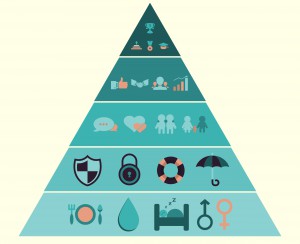Objectively, have you ever stopped to reflect on what made you happy? Could it be a car? be healthy? A family? Money? Friends? A steady job? This is a very personal answer and one that doesn't offer a universal value that completely satisfies her. A person can have all of the above, but not consider themselves happy, as the reverse also happens.
According to the American psychologist Abraham Maslow, it is possible to establish a hierarchy of conditions necessary for each of us to reach a level of personal and professional satisfaction. For this, the psychologist developed Maslow's Pyramid, also known as Maslow's Hierarchy of Needs.
Based on this concept, the psychologist created a pyramid that was divided into five levels, in which people must start at the bottom and go through each of these levels until they reach the top.
O First level, according to Maslow, it is about physiological satisfaction, that is, the person needs, first of all, to be able to satisfy their basic needs, such as hunger, thirst, sleep, exception, shelter, etc.
O second level would be security related. After going through physiology, the individual needs to feel safe inside a house, have a job and other conditions connected with structure and stability.
Then we have the third level, which are social and affection needs. At this level, the individual needs to feel part of a social group, have friends, build a family and feel loved by the people around him.
No penultimate level, Maslow points to esteem. The need for recognition of our personal abilities, self-confidence, achievement, respect from others, making a direct connection with status in society.
Finally, the fifth level it's personal fulfillment. The top of the pyramid reflects what the person wants to be, free to create and act, developing their full potential and aligning in symmetry what you want, with what you can and with what you should do.
Maslow's Pyramid proposes that people can satiate, at least in part, the first level so that they can move on to the next and so on.
Obviously, like everything related to science, it is also a theory subject to criticism. For example, a person may claim to have achieved self-actualization at the top of the pyramid, but without having fully satiated some previous level. As we said at the beginning, there is no universal value for happiness. After all, happiness is a goal to be reached after a long journey, or it is the path itself, in which each of our choices can make us happy, but without taking into account where we will end up.
If there is no universal value to define what happiness is, there is a consensus that it cannot be achieved without acting. Life is movement, acting changes things the way you want them most. Time passes and things change like the Earth rotates, so the same goes for you.
Doing good to you and not to others, go ahead, what have you got to lose?
- Text written by Diego Rennan from the Eu Sem Fronteiras Team

























